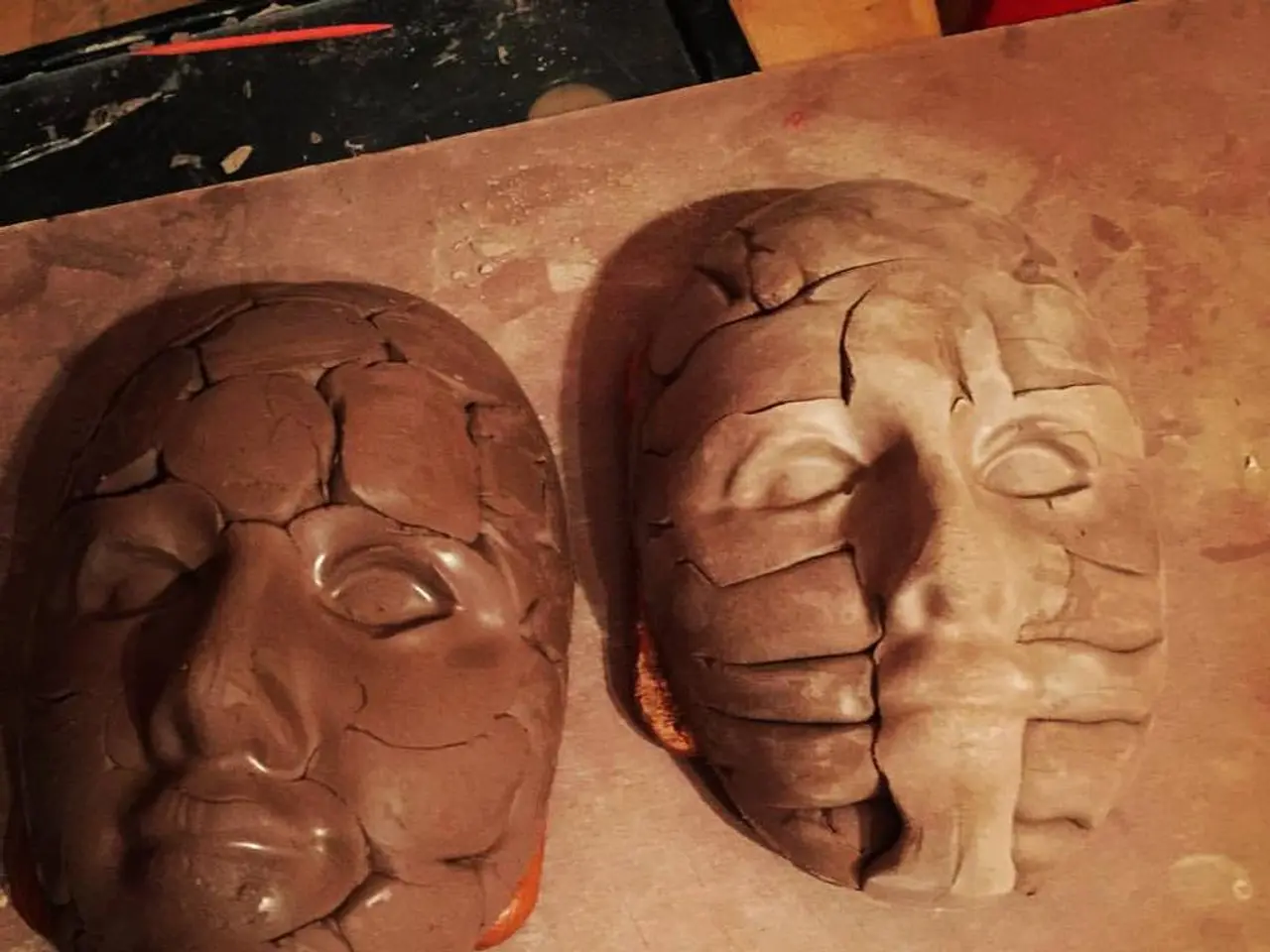The inner workings of the Human Blockhead revealed
In the realm of circus acts, one stunt stands out as particularly intriguing: the human blockhead trick. This classic sideshow performance involves a performer inserting a nail or other object into their nasal cavity, creating the illusion of pushing it deep into their head. But what exactly is happening anatomically and physiologically during this daring act?
The Anatomy of the Human Blockhead Trick
The main anatomical location for this trick is the nasal cavity, specifically the nasal passage above the roof of the mouth and behind the nose. The nail is inserted along the floor of the nasal cavity, entering the nasopharynx region without causing damage. This is possible due to the nasal passage being a natural corridor that can accommodate objects inserted gently.
The key to the trick's safety lies in the fact that the nasal cavity connects through the nasopharynx to the oral cavity above the throat, a natural hollow passage inside the head. The performer carefully guides the nail horizontally along the floor of the nasal cavity, avoiding contact with sensitive areas like the delicate mucosa of the septum or the braincase. No piercing of brain tissue or bone occurs; the nail travels through a path that physically exists.
The Physiology of the Human Blockhead Trick
The nasal cavity is a hollow space lined with mucous membranes and surrounded by bone structures such as the nasal septum and sinuses. The trick exploits this anatomy, using the nasal passage as a corridor for the object.
The performer's anatomical knowledge, practice, and control of the gag reflex and pain receptors are crucial to the success of the trick. They must learn to guide a nail into the nasal cavity, moving the lower edge of their nostril out of the way if necessary.
The Risks Involved
Despite the illusion of the nail being hammered into the "head," anatomically, it is just traveling through a hollow nasal route ending near the upper throat area internally. However, the human blockhead trick does pose hazards to the performer, such as the risk of infection or injury. Sneezing while attempting to put a nail into the nasal cavity could be very dangerous, potentially pulling the foreign object further into the nasal passageway.
The sneeze reflex is one of the body's defense mechanisms against bacteria and viruses, expelling particles that could make a person sick. Ignoring this reflex, as the performer must do during the trick, potentially leads to sinus and throat infections.
In conclusion, the human blockhead trick is a fascinating blend of anatomy, physiology, and skill. While it may seem daunting, a deep understanding of the nasal cavity and the performer's control over their body allow them to safely perform this classic sideshow stunt.
Exploration of Science and Health-and-Wellness in the Human Blockhead Trick
Understanding the science and health implications of the human blockhead trick offers valuable insights into the anatomy and physiology of the nasal cavity. The trick, though performed in a circus context, provides a unique opportunity to study the human body's reactions and adaptations.
The performer's ability to control their pain receptors and gag reflex is a testament to the human body's resilience and adaptability, a significant aspect of health-and-wellness research. By pushing the boundaries of what the body can endure, we gain a greater appreciation for our physiological capabilities.




